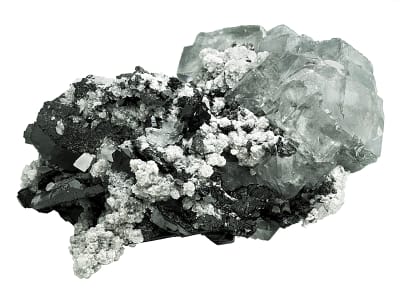Ferberite is iron tungstate and it is mined for its tungsten content. It is a monoclinic member of the wolframite group. It is named after the amateur German mineralogist Moritz Rudolph Ferber. It forms in high-temperature hydrothermal veins, greisens, and granitic pegmatites. Crystals are dark brown to black, metallic, and typically form flattened wedge shape crystals. Twinning can occur. At times it can exhibit weak magnetism. Impressive mineral specimens come from Panasqueira, Covilhã, Castelo Branco District, Portugal; Zinnwald, Saxony, Germany; the Yaogangxian Mine, Hunan Province, China; and Tazna Mine, Atocha, Potosí Department, Bolivia.
General Information
Ferberite Colors
-
 Black
Black -
 Brown
Brown
Countries of Origin
Papua New Guinea; Kazakhstan; Portugal; Bosnia And Herzegovina; Austria; Mongolia; Korea (the Republic of); Unknown; Brazil; Algeria; Colombia; Argentina; Iran (Islamic Republic of); Hungary; Republic of Kosovo; Japan; Ukraine; Bolivia (Plurinational State of); India; Canada; Namibia; Finland; Italy; South Africa; Georgia; Peru; Germany; Russian Federation; Czechia; United States of America; Madagascar; Thailand; United Kingdom of Great Britain and Northern Ireland; Sweden; Pakistan; China; Poland; Slovakia; Bulgaria; France; Serbia; Kyrgyzstan; Romania; Rwanda; Switzerland; Spain; Cuba; Norway; Congo (the Democratic Republic of the); Mexico; Uganda; Zimbabwe; Australia; Greenland; Indonesia
History
Discovered in in 1863 in Sierra Almagrera, Spain.
Care
Ferberite is brittle so please take care when handling. Soluble in strong acids.
